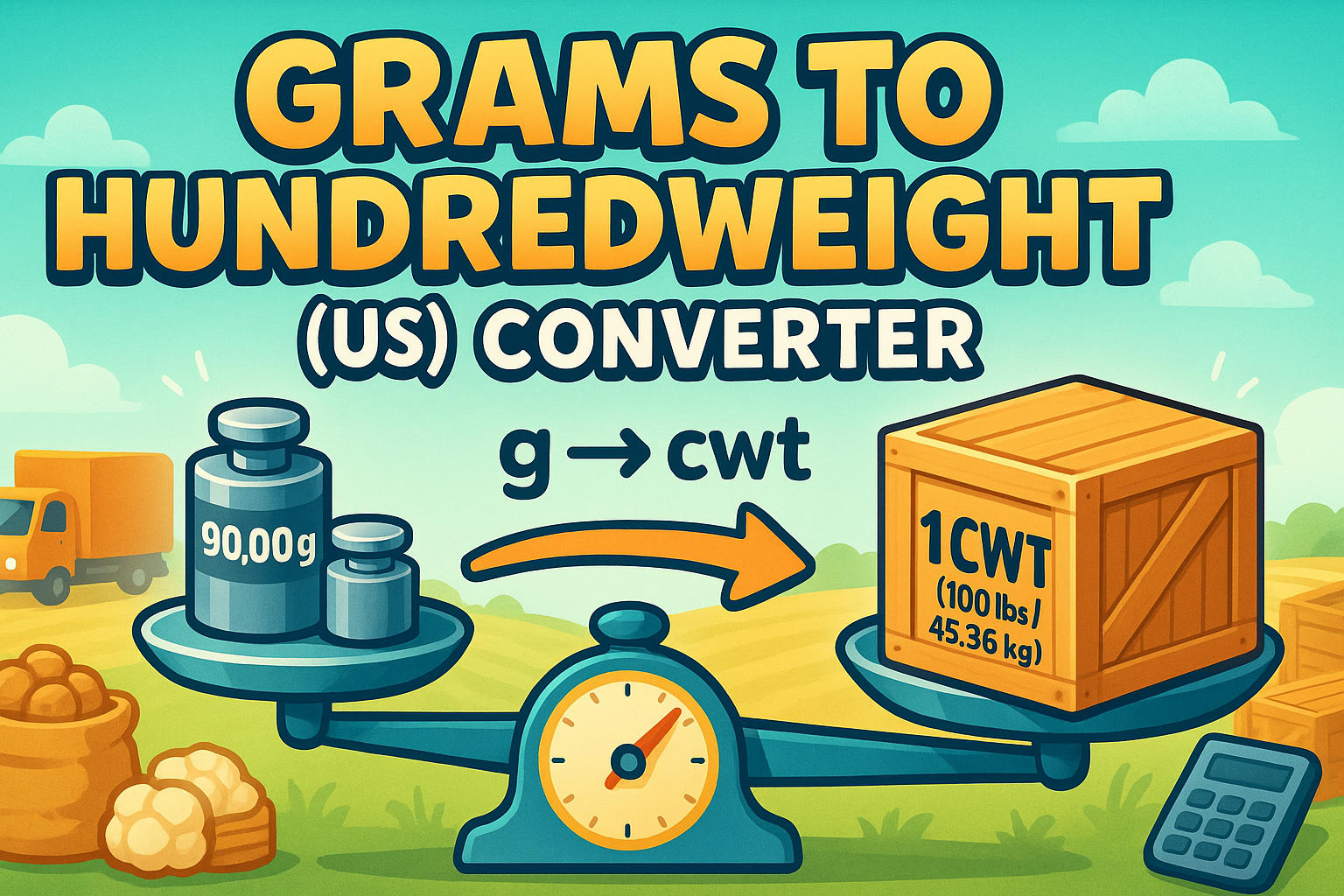grams to hundredweight (US) – How to convert g to cwt US
When dealing with large quantities of weight, especially in agriculture or freight, converting grams to hundredweight (US) becomes essential. Whether you're in logistics, academics, or just curious, this article will help you understand how to convert g to cwt US easily and accurately.
What is a Gram and Hundredweight (US) ?
-
The gram (g) is the standard unit of mass in the metric system, equal to one-thousandth of a kilogram. Introduced in 1795 as part of the French metric reform, the gram became a global benchmark for measuring small to moderate quantities. It’s used in science, nutrition, manufacturing, and daily life across most countries.
If you need to explore smaller or intermediate conversions, try our Grams to Ounces Converter or Grams to Pounds Converter.
-
A hundredweight (US), abbreviated as cwt (US), is a unit of mass used in the U.S. customary system, particularly in agriculture, shipping, and bulk trade. It equals 100 pounds, or approximately 45.359 kilograms. This is different from the Imperial hundredweight, which equals 112 pounds.
To compare both systems, check out our Kilograms to Hundredweights (UK) Converter for UK-based equivalents.

How to Convert Grams to Hundredweight (US)?
To convert grams to hundredweight (US), use the formula:
cwt US = grams ÷ 45,359.237
Example:
If you have 90,000 grams:
90,000 ÷ 45,359.237 ≈ 1.984 cwt US
You can also find broader tools like the Weight Converter and the all-purpose Unit Converter for converting between any units.
Did you know?
-
Pharmaceutical labs use grams to ensure dosage precision. For example, an over-the-counter painkiller might contain 500 mg (0.5 grams) of active ingredient, and tools like the Grams to Milligrams Converter help when finer adjustments are needed.
-
In U.S. freight billing, shipments are often charged “per CWT.” The term “centum weight” dates back centuries and is still used today in FedEx and UPS bulk freight rate charts.
-
In food labeling, all nutrition facts are based on grams, from sugar to protein. Our converters help clarify values, whether you're cooking or analyzing data.
-
Grain yields are frequently measured in cwt. A USDA report may say “180 cwt of potatoes per acre,” especially in states like Idaho.
When Cotton Drove the U.S. Weight System
In the 1800s, the American South was dominated by cotton. Farmers would harvest and pack bales weighing close to 500 pounds. These bales were sold based on hundredweight (US) pricing to simplify trade. Customs documents and shipping manifests often listed cargo in CWT, making it a commercial norm.
Even today, the legacy continues in agricultural and freight systems. Understanding conversions like grams to hundredweight (US) helps you connect modern measurements to historical systems. Curious about more such conversions? Use our Grams to Ounces Converter to explore more practical tools.
.jpg)
Conclusion
Now you know how to convert grams to hundredweight (US) confidently. Whether you're managing crop yields, shipping freight, or calculating food mass, this conversion bridges the metric and U.S. customary systems. With tools like the Weight Converter and Unit Converter, you’re always ready to convert with accuracy and ease.

